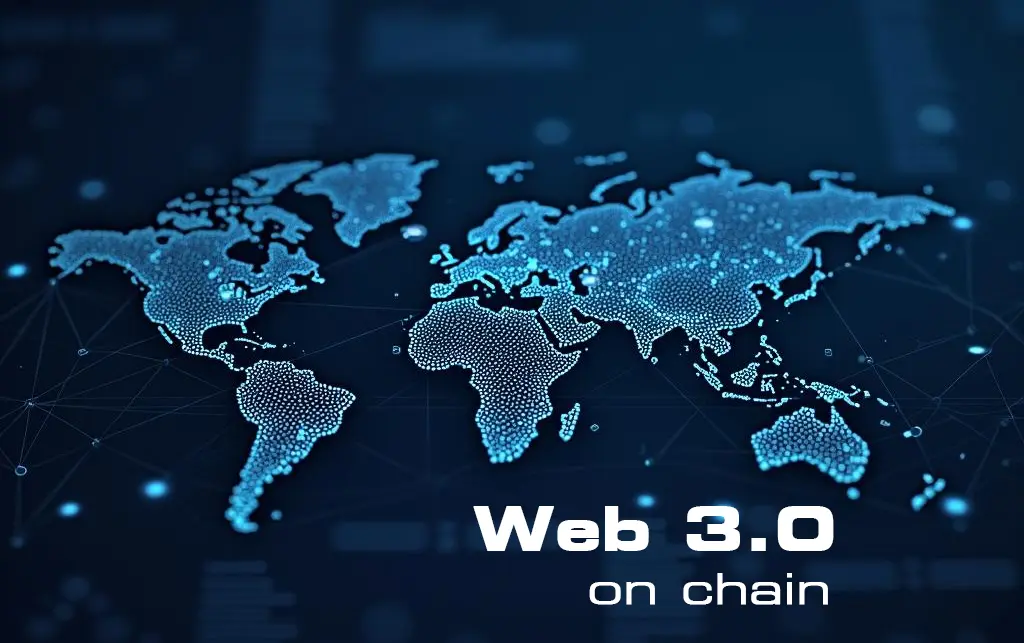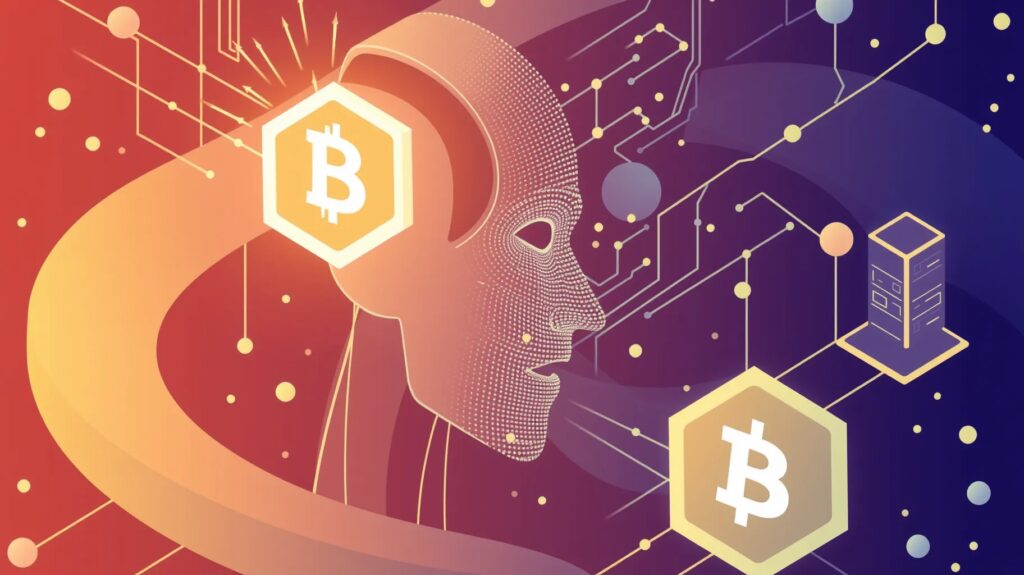
How On-Chain Data Will Power the Next Generation of the Internet
The internet is transforming once again. Web 3.0 promises to revolutionize how we interact, transact, and build online. At the core of this evolution lies on-chain data—a transparent and immutable foundation reshaping our digital future.
What Is On-Chain Data in Web 3.0?
The Definition of On-Chain Data
On-chain data refers to information stored directly on a blockchain. Every action, transaction, and record becomes a permanent, verifiable entry. Unlike traditional databases, this data is decentralized, ensuring greater transparency and trust.
Blockchain as the New Infrastructure
Blockchains serve as the digital ledgers underpinning Web 3.0. Each network, like Ethereum or Solana, maintains a shared history of all events. This infrastructure allows decentralized applications (dApps) to thrive without relying on centralized servers.
Why Transparency Matters
In Web 3.0, transparency isn’t just a buzzword—it’s a necessity. On-chain data ensures that users can independently verify claims, enhancing trust in industries like finance, supply chains, and beyond.
Decentralization: A Paradigm Shift in Data Ownership
User-Owned Data vs. Centralized Control
Traditional Web 2.0 platforms often hoard user data, profiting off surveillance capitalism. In contrast, Web 3.0 empowers users by letting them control and monetize their own information.
Smart Contracts and Decentralized Applications
With smart contracts, actions are automatically executed once conditions are met. For example, royalties in music NFTs are instantly paid to artists—no middleman required.
Reducing Single Points of Failure
Decentralization mitigates risks of hacks and censorship. Data is distributed across nodes, making it incredibly resilient to attacks or outages.
Unlocking New Use Cases with On-Chain Data
Decentralized Finance (DeFi)
DeFi platforms rely heavily on on-chain data for financial operations. Lending, staking, and trading occur transparently, with every transaction visible on the blockchain.
Identity and Verification
Blockchain offers a solution to fake identities and fraudulent activity. Through self-sovereign identity, users can prove who they are without exposing unnecessary personal details.
Gaming and the Metaverse
In virtual worlds, on-chain assets like NFTs ensure players truly own their items. These assets can even transfer between games, redefining digital ownership.
Challenges in Scaling On-Chain Data
Scalability Concerns
As blockchains grow, so does the size of on-chain data. Networks like Ethereum are developing Layer 2 solutions to handle more transactions efficiently.
Data Privacy vs. Transparency
Finding the right balance between public transparency and individual privacy remains a complex challenge. Emerging privacy protocols, like zk-SNARKs, are addressing these concerns.
Energy Consumption
Some blockchains, particularly earlier ones, have been criticized for high energy use. However, proof-of-stake systems are emerging as greener alternatives.

Web 3.0 and the Revolution of Real-Time Insights
Data Access Without Intermediaries
In Web 3.0, real-time access to on-chain data eliminates the need for third-party intermediaries. Developers can query blockchain networks directly for immediate updates, creating unprecedented transparency in markets like cryptocurrency trading and supply chain tracking.
Predictive Analytics in Decentralized Systems
On-chain data fuels AI and machine learning models, enabling predictive analytics. For example, patterns in DeFi transactions can reveal market trends or detect fraudulent activity before it escalates.
Transforming Traditional Business Models
Companies can leverage blockchain insights to redesign operations. Supply chain businesses, for instance, use on-chain data to track goods, verify authenticity, and predict bottlenecks—all in real time.
Empowering Communities with Public-Ledger Access
DAOs and Collaborative Governance
Decentralized Autonomous Organizations (DAOs) rely on on-chain voting to make collective decisions. Each vote is recorded transparently, ensuring accountability within digital communities.
Tokenomics and Incentive Structures
On-chain data lets projects design token models that align user incentives with ecosystem growth. Stakeholder activities, like staking or voting, can directly influence rewards systems.
Inclusive Access for Global Users
By removing centralized gatekeepers, on-chain data democratizes access. Communities in underbanked regions, for instance, can now participate in financial ecosystems through decentralized platforms.
The Interoperability Advantage
Cross-Chain Compatibility
Interoperability protocols like Polkadot and Cosmos enable different blockchains to communicate seamlessly, allowing data to flow across networks. This opens new opportunities for combining diverse ecosystems.
Unified User Experiences
For end-users, interoperability means they can access services across platforms without barriers. Imagine transferring an NFT seamlessly from Ethereum to a gaming app on Solana, powered by cross-chain data flow.
Bridging Web 2.0 and Web 3.0
Hybrid solutions are emerging to integrate traditional databases with blockchain systems. This bridging technology helps businesses transition to Web 3.0 without abandoning legacy systems.
Pantos by Bitpanda: Pioneering Interoperability for a Seamless Web3 Future
Pantos, an initiative by Bitpanda, is at the forefront of enhancing blockchain interoperability within the Web3 ecosystem. Launched in 2018 as a collaborative research project with the Technical University of Vienna,
Pantos aims to establish a truly multichain token system, enabling seamless and secure transfer of digital assets across various blockchain networks.

Key Developments:
- Public Beta Launch: In February 2023, Pantos introduced the public beta of its multichain protocol, allowing developers and users to send tokens, wrap native coins of supported chains, and create multichain tokens with ease. This launch marked a significant milestone in providing the infrastructure necessary for Web3 interoperability. Analytics Insight
- PANDAS Standard: Pantos introduced the Pantos Digital Asset Standard (PANDAS), a new multichain token standard designed to facilitate secure and seamless Web3 interoperability. This standard supports multiple chains, including Ethereum, Polygon, Avalanche, BNB, Cronos, Celo, and Fantom, with plans for continuous integration of additional EVM and non-EVM chains. Analytics Insight
- Security Audit: In November 2024, Softstack completed a comprehensive security audit of Pantos’ cross-chain node infrastructure and smart contracts. The audit identified no critical issues, reinforcing the robustness of Pantos’ approach to security and its commitment to providing a secure multichain environment. Bitcolumnist
Implications for Web3:
Pantos’ advancements in blockchain interoperability are poised to significantly impact the Web3 landscape by:
- Enabling Multichain DeFi Applications: By allowing DeFi applications to operate across multiple blockchains, Pantos opens up new possibilities for decentralized exchanges and financial services, enhancing user experience and accessibility. Pantos
- Facilitating NFT Transfers: Pantos’ technology supports the transfer of non-fungible tokens (NFTs) across different blockchains, providing creators and collectors with greater flexibility and broader market access. Pantos
- Promoting Collaboration: As an open-source project, Pantos fosters collaboration among various developer groups and cryptocurrency communities, driving innovation and the development of new tools and products in the decentralized internet era. Bitpanda
Exciting Announcement Ahead for Pantos:
(25/01/2025) Stay Tuned!
We know the future of the internet is onchain.
— Bitpanda (@Bitpanda_global) December 18, 2024
But right now, it’s a mess—too complex, too overwhelming, and without a standard.
We’re building the gateway to a new internet, powered by the combined strength of our token ecosystem.
See you soon… pic.twitter.com/Qe4jz3qYgP
In summary, Pantos is playing a pivotal role in advancing blockchain interoperability, thereby contributing to the evolution of a more interconnected and efficient Web3 ecosystem.
The Role of AI and Automation in On-Chain Data
Automating Transactions with Smart Contracts
Smart contracts automate complex transactions by accessing real-time on-chain data. For example, crop insurance payouts can trigger automatically after verifying weather conditions.
AI-Driven Data Interpretation
Machine learning algorithms analyze blockchain activity patterns, offering actionable insights. From tracking whale movements to identifying emerging NFT trends, AI makes on-chain data more accessible.
Building Autonomous Economies
With the combination of on-chain data and AI, entirely autonomous economies are possible. For instance, decentralized energy grids could manage distribution and payments independently.
The Future of On-Chain Data in Web 3.0
Revolutionizing Data Monetization
In Web 3.0, users become the owners and sellers of their data. With data tokenization, individuals can grant specific access rights to their information in exchange for cryptocurrency, disrupting the traditional advertising and analytics industries.
Enhanced Security with Zero-Knowledge Proofs
Emerging technologies like zero-knowledge proofs (ZKPs) allow users to verify information without exposing raw data. For instance, you could prove you’re over 18 without revealing your birthdate—blending privacy with blockchain transparency.
Enabling Hyper-Personalized Experiences
On-chain data can fuel personalized experiences across decentralized platforms. Think tailored NFT recommendations based on your wallet history or curated DeFi products aligned with your transaction habits.
Building Resilient Web 3.0 Ecosystems
The Role of Decentralized Storage
On-chain data is immutable, but not all Web 3.0 information resides directly on blockchains. Decentralized storage solutions, like IPFS and Arweave, complement blockchains by hosting large datasets while keeping data accessible and censorship-resistant.
Governance Through Immutable Records
On-chain governance tools give communities the tools to vote, propose changes, and audit past decisions transparently. As DAOs grow, these immutable records will serve as historical blueprints for decentralized communities.
Disaster Recovery in a Decentralized Internet
The distributed nature of on-chain data ensures resilience. Unlike centralized systems vulnerable to outages, Web 3.0 ecosystems can withstand disasters, maintaining uptime across the globe.
Industries Ready for Disruption
Healthcare and Medical Records
On-chain data could revolutionize patient record management, offering tamper-proof and universally accessible health histories while safeguarding privacy through encryption technologies.
Intellectual Property and Royalties
Blockchain eliminates disputes over royalty payments. Artists, developers, and writers can receive automatic compensation for their work based on predefined terms embedded in smart contracts.
Government Services and Public Records
Governments are exploring blockchain for e-voting systems, land registries, and public fund tracking. With on-chain transparency, trust in institutions can be restored.
Preparing for a Web 3.0 World
Adopting Blockchain Education
As the shift to Web 3.0 accelerates, blockchain literacy will become crucial for individuals and organizations. Free resources, online courses, and community-led initiatives are already paving the way.
Collaborative Development Between Sectors
The transition to a Web 3.0 ecosystem will require collaboration between industries, policymakers, and technologists. Together, they can establish standards and frameworks for widespread adoption.
Experimenting with Web 3.0 Tools
For individuals and businesses, experimenting with DeFi, NFTs, and DAOs provides hands-on learning. Testing these tools today could offer a competitive edge in tomorrow’s internet economy.
Conclusion: A Transparent and Decentralized Future
Web 3.0’s foundation in on-chain data is more than a technical evolution—it’s a paradigm shift toward transparency, fairness, and user empowerment. As we embrace this decentralized future, the potential for innovation across industries is boundless. Web 3.0 is not just the next version of the internet—it’s a new way of connecting, creating, and collaborating in the digital age.
FAQs
Is on-chain data private?
Not inherently. While data on public blockchains is transparent, privacy-focused tools like zk-SNARKs or Monero offer methods to protect sensitive information. For example, zk-SNARKs allow a transaction to be validated without exposing the sender, receiver, or amount.
How does on-chain data improve security?
Decentralization makes it harder for bad actors to attack the system. For instance, if a blockchain has thousands of nodes verifying transactions, compromising the network would require controlling a majority—a virtually impossible feat for most networks.
What are the limitations of on-chain data?
While powerful, on-chain data comes with challenges like scalability, as blockchains can become congested with high usage. For example, Ethereum gas fees spike during heavy activity, making transactions slower and more expensive.
How do I access on-chain data?
You can access on-chain data using tools like blockchain explorers (e.g., Etherscan for Ethereum). These platforms let you track transactions, wallet activity, and smart contracts in real time.
Can traditional businesses use on-chain data?
Absolutely. Businesses can integrate blockchain into their systems for enhanced trust and efficiency. For example, Walmart uses blockchain to track food safety, tracing contaminated products back to their source in seconds instead of days.
What’s the difference between on-chain and off-chain data?
On-chain data resides entirely on a blockchain and is transparent and immutable. Off-chain data, however, exists outside the blockchain (e.g., in centralized databases) and must be linked or validated for blockchain integration. For example, a payment system might store sensitive credit card details off-chain but use a blockchain to verify transaction authenticity.
Can on-chain data help prevent fraud?
Yes, on-chain data enhances fraud prevention by creating a tamper-proof record of activities. In the case of supply chain management, blockchain can verify the authenticity of goods, like ensuring that a designer handbag is not counterfeit by tracking its production and distribution history.
How does on-chain data affect governance?
On-chain data enables transparent decision-making in decentralized governance systems like DAOs (Decentralized Autonomous Organizations). For example, every vote cast in a DAO is recorded on the blockchain, allowing all members to audit the process and verify outcomes.
What is an example of real-world on-chain data use?
In real estate, on-chain data can track property ownership and transactions. Countries like Sweden have piloted blockchain-based land registries, ensuring that property records are tamper-proof and accessible to all stakeholders.
How does on-chain data work with smart contracts?
On-chain data is crucial for executing smart contracts, which are self-executing agreements. For example, in insurance, a smart contract could automatically release a payout when it verifies weather data (like rainfall levels) tied to an insured event.
What role does on-chain data play in NFTs?
NFTs rely on on-chain data to verify ownership and provenance. When you purchase an NFT, the blockchain records your wallet address as the owner, ensuring proof of authenticity. This data cannot be altered, even if the artwork is sold or transferred.
How is on-chain data stored?
On-chain data is stored in blocks within the blockchain network. Each block contains a set of transactions and a link to the previous block, forming a secure, chronological chain. For larger datasets, systems like IPFS (InterPlanetary File System) store the data while the blockchain holds references.
How does on-chain data support decentralized identity?
Decentralized identity uses on-chain data to verify credentials without relying on centralized authorities. For example, a blockchain-based ID could allow you to log into websites, prove your age, or share credentials without revealing personal details.
What’s the environmental impact of on-chain data?
Some blockchains, especially those using proof-of-work (PoW), have a high environmental cost due to energy consumption. However, newer proof-of-stake (PoS) blockchains like Solana or Ethereum (post-merge) significantly reduce energy use, making on-chain data more sustainable.
How do developers access and use on-chain data?
Developers access on-chain data via APIs, blockchain explorers, or oracles. For example, Chainlink provides oracles that connect blockchains with off-chain data like weather reports, enabling real-world integration for smart contracts.
Are there privacy-friendly ways to use on-chain data?
Yes, privacy-preserving technologies like zk-SNARKs and MPC (Multi-Party Computation) allow specific data points to be verified without exposing all the details. For example, a loan application could confirm your income without revealing the exact amount.
Resources
Blockchain Explorers
- Etherscan: Explore Ethereum transactions, wallet activity, and smart contract details.
- Solscan: A blockchain explorer for Solana that provides transaction histories and real-time network data.
- BscScan: For Binance Smart Chain, offering tools to monitor on-chain activity and explore contracts.
Educational Platforms
- Ethereum.org: A beginner-friendly resource to learn about Ethereum, smart contracts, and dApps.
- Blockchain at Berkeley: Offers free educational content, including videos, articles, and research papers.
- CoinDesk Learn: A hub for understanding blockchain technology, cryptocurrencies, and their applications.
Tools for Developers
- Alchemy: A platform for building blockchain-based applications with access to APIs and developer tools.
- Infura: Provides easy access to Ethereum and IPFS, allowing developers to integrate Web 3.0 features.
- Chainlink: A decentralized oracle network that connects smart contracts with off-chain data.
Communities and Forums
- Reddit – r/ethereum: Discuss Ethereum news, updates, and technical questions with the community.
- Web3 Foundation Forum: Dive into Polkadot and Web 3.0 technologies with like-minded enthusiasts.
- GitHub Blockchain Repositories: Explore code repositories to learn how blockchain projects are built.




